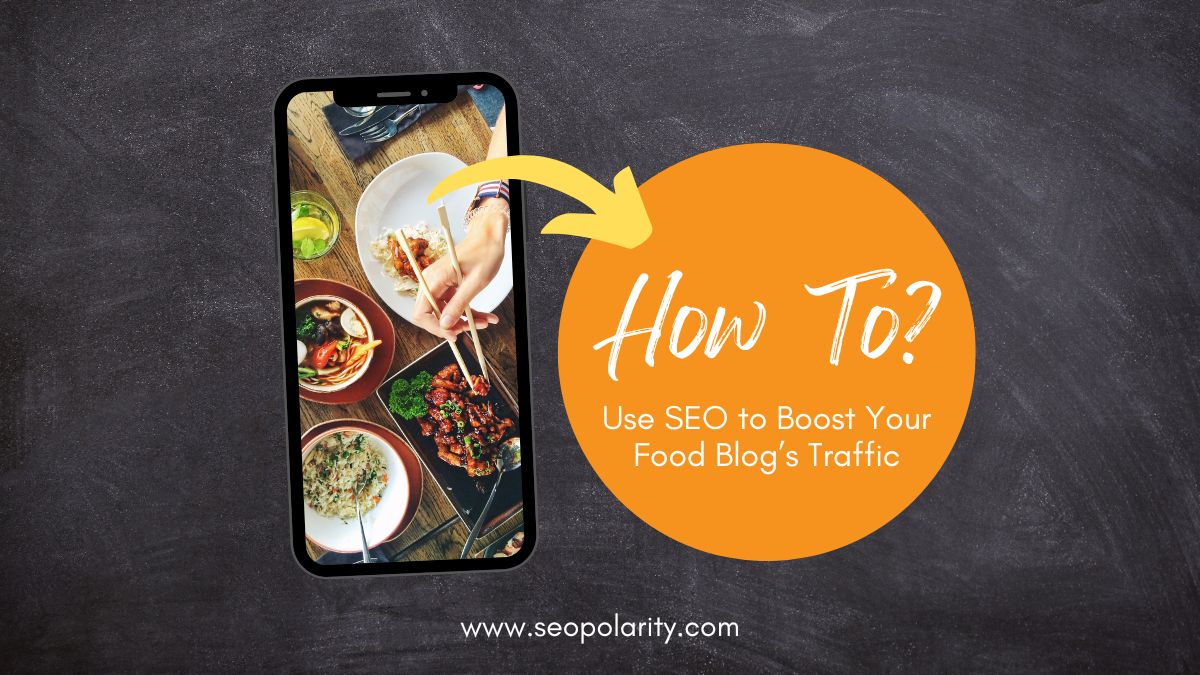
Food blogging is expanding. Standing out and getting a big audience requires more than just tasty recipes. It also requires pretty photos. SEO is important. It increases your blog’s visibility, attracts more visitors, and builds a loyal readership. This guide covers the key steps for using SEO. They will help you boost your food blog’s traffic.
Understanding SEO and Its Importance for Food Blogs
SEO is the process of making your website rank higher in search engine results pages (SERPs). When readers search for recipes or food content, you want your blog to be at the top of the results. Higher rankings bring more organic traffic. This traffic can boost engagement, brand recognition, and monetization.
Why SEO Matters for Food Blogs
- Increased Organic Traffic: Higher search rankings lead to more visitors finding your blog through search engines.
- Audience Targeting: SEO helps attract readers who are specifically interested in your type of content.
- Cost-Effective Growth: Unlike paid advertising, SEO is a long-term strategy that can provide sustainable growth.
- Authority and Credibility: High rankings in search results enhance your blog’s credibility and authority in the food blogging community.
Key SEO Strategies for Food Blogs
To optimize your food blog for SEO, you need to focus on key areas. These include keyword research, on-page SEO, content, and technical SEO. Let’s dive into each of these strategies in detail.
1. Keyword Research
Keyword research is the foundation of any successful SEO strategy. It involves finding the terms and phrases. They are used by potential readers to search for content like what your food blog offers.
How to Conduct Keyword Research
- Use Keyword Research Tools: Tools like Google Keyword Planner, SEMrush, and Ahrefs can help you identify popular search terms related to food and recipes.
- Analyze Competitors: Look at the keywords your competitors are targeting and consider using similar ones.
- Focus on Long-Tail Keywords: Long-tail keywords are more specific and less competitive. For example, “vegan chocolate cake recipe” is a long-tail keyword.
- Seasonal Keywords: Incorporate keywords that are relevant to specific seasons or holidays, such as “Christmas cookies” or “summer salads.”
2. On-Page Optimization
On-page optimization involves optimizing blog posts and pages. It aims to make them rank higher in search results. Here are some on-page SEO elements to consider for your food blog:
Title Tags
- Include Keywords: Ensure your title tags contain relevant keywords. For example, “Best Vegan Brownie Recipe.”
- Be Descriptive: Your title should accurately describe the content and entice users to click on it.
Meta Descriptions
- Summarize the Post: Write a concise and compelling meta description that summarizes the blog post.
- Include Keywords: Incorporate relevant keywords naturally.
- Call to Action: Encourage users to click with a call to action, such as “Discover the secret ingredient now!”
Headers (H1, H2, H3)
- Use H1 Tags for Titles: Each blog post should have a unique H1 tag that includes the main keyword.
- Subheadings with H2 and H3 Tags: Use H2 and H3 tags for subheadings to structure your content and make it easier to read.
Content Optimization
- Detailed Descriptions: Provide detailed and engaging descriptions of your recipes or food-related content.
- Natural Keyword Usage: Use keywords naturally within the content without overstuffing.
- Internal Linking: Link to other relevant posts on your blog to keep readers engaged and improve SEO.
Images and Alt Text
- High-Quality Images: Use high-quality images to showcase your recipes and food photography.
- Alt Text: Add descriptive alt text to each image, including relevant keywords. For example, “gluten-free blueberry muffins.”
3. Content Creation
Creating valuable and engaging content is key to attracting and retaining readers. Here are some content ideas and tips for food bloggers:
Recipe Posts
- Step-by-Step Instructions: Provide clear and detailed instructions for each recipe.
- Ingredient Lists: Include comprehensive ingredient lists with measurements.
- Nutritional Information: Offer nutritional information for health-conscious readers.
Blog Posts
- Food Trends: Write about the latest food trends and how to incorporate them into your recipes.
- Cooking Tips: Share cooking tips, techniques, and kitchen hacks.
- Food Reviews: Review restaurants, food products, or kitchen gadgets.
Videos
- Cooking Demonstrations: Create video tutorials showing how to prepare your recipes.
- Behind-the-Scenes: Share behind-the-scenes footage of your cooking process or food photography setup.
- Interviews: Interview other food bloggers, chefs, or food industry experts.
4. Technical SEO
Technical SEO involves improving your website’s technical parts. This is to boost its performance and user experience. Here are some key technical SEO elements to consider:
Mobile Optimization
- Responsive Design: Ensure your blog is mobile-friendly and looks great on all devices.
- Fast Loading Times: Optimize your website’s loading speed by compressing images, using a content delivery network (CDN), and minimizing code.
URL Structure
- Clean URLs: Use clean and descriptive URLs for your blog posts. For example, “yourwebsite.com/vegan-chocolate-cake-recipe.”
- Keywords in URLs: Include relevant keywords in your URLs.
Schema Markup
- Structured Data: Use schema markup to provide search engines with detailed information about your recipes and content. This can improve your chances of appearing in rich snippets and other enhanced search results.
Secure Website
- SSL Certificate: Ensure your website is secure by using HTTPS.
5. Link Building
Link building involves getting backlinks from other websites. This improves your blog’s authority and rankings. Here are some strategies for building links:
Guest Blogging
- Write Guest Posts: Write guest posts for other food blogs and include a link back to your blog.
- Invite Guest Bloggers: Invite other food bloggers to write guest posts on your blog and promote them.
Collaborations
- Collaborate with Influencers: Partner with food influencers for collaborations, such as recipe swaps or joint blog posts.
- Participate in Roundups: Contribute to roundup posts on other blogs and link back to your content.
Social Media
- Share Your Content: Share your blog posts on social media platforms to increase visibility and attract potential backlinks.
- Engage with Followers: Engage with your followers and encourage them to share your content.
Monitoring and Adjusting Your SEO Strategy
SEO is an ongoing process that requires regular monitoring and adjustments. Here are some tips for keeping your SEO strategy on track:
Use Analytics Tools
- Google Analytics: Track your blog’s traffic, user behavior, and conversion rates.
- Google Search Console: Monitor your site’s performance in search results and identify any issues.
Regularly Update Content
- Fresh Content: Keep your blog posts and recipes updated with fresh content.
- Remove Outdated Posts: Remove or update any outdated posts to avoid confusion and improve user experience.
Analyze Competitors
- Competitive Analysis: Regularly analyze your competitors’ SEO strategies and identify areas where you can improve.
Stay Updated with SEO Trends
- SEO News: Follow SEO blogs and news sites to stay informed about the latest trends and algorithm updates.
- Continuous Learning: Invest in ongoing education to keep your SEO skills sharp.
Conclusion
Optimizing your food blog for SEO is vital. It boosts visibility and attracts new visitors. It also helps build a loyal readership. Focus on keyword research. Also, work on on-page optimization, content creation, technical SEO, and link building. These will boost your blog’s search rankings. They will help you stand out in the competitive food blogging niche. Remember, SEO is ongoing. It needs regular monitoring and adjustments. So, stay proactive and committed to your strategy for long-term success.




